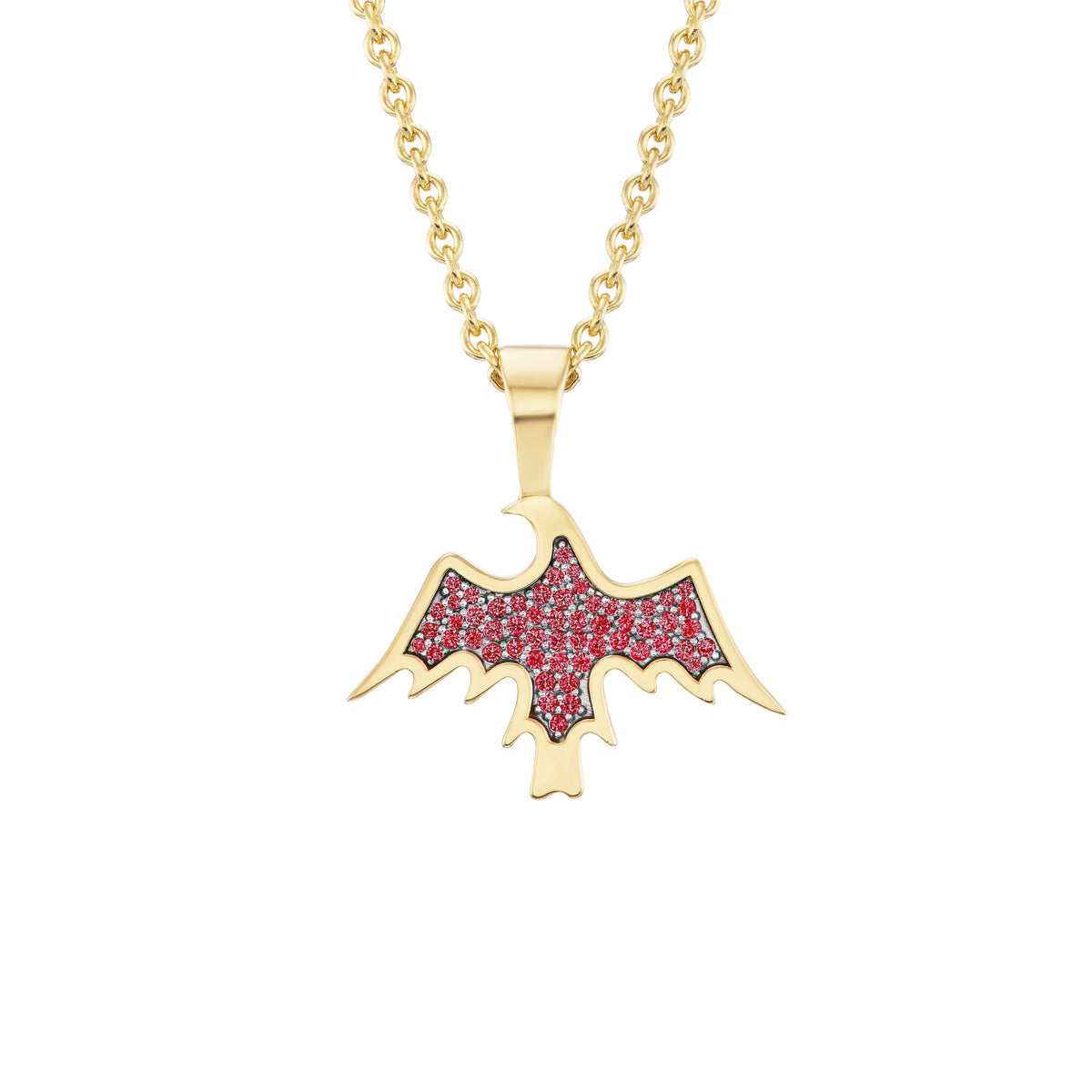
Ruby: Nature's Fiery Splendor
|
Time to read 4 min
|
Time to read 4 min
For millennia, the passionate red of ruby has captured hearts and imaginations worldwide. Known in ancient Sanskrit as "ratnaraj" (king of precious stones), ruby continues to reign supreme among colored gemstones. With its deep crimson glow and remarkable durability, this precious stone embodies the very essence of desire and power.
While ruby is definitively red, its range of hues tells a fascinating story of nature's artistry. The most coveted shade is the legendary "pigeon's blood" ruby – a pure red with a hint of blue that seems to glow from within. The color spectrum extends from light rosé to deep crimson, with each shade offering its own unique beauty. Some exceptional rubies display a mesmerizing asterism – a six-rayed star that appears to float across the surface when cut as a cabochon.
The intensity of ruby's color comes from chromium, the same element that gives emeralds their green hue. Under different growing conditions, this mineral produces ruby's characteristic red, creating stones that can range from transparent to slightly silky in appearance. The finest specimens combine exceptional color with remarkable clarity, though small inclusions, poetically called "silk" by gemologists, can actually enhance a ruby's beauty by diffusing light throughout the stone.
Modern gemological techniques allow experts to enhance rubies through heat treatment, a practice that improves their color and clarity. These enhancements, when disclosed, are widely accepted within the industry and make the fiery beauty of ruby more accessible to jewelry lovers worldwide.
The world's most exceptional rubies emerge from a handful of celebrated locations, each producing stones with distinctive characteristics. Myanmar (formerly Burma) has long been considered the source of the finest rubies, particularly from the legendary Mogok Valley. These stones exhibit the perfect combination of color saturation and fluorescence that creates their signature inner glow.
Thailand's rubies typically display a darker red with brown or violet undertones, while Madagascar produces crystals ranging from light pink to deep red. Recent discoveries in Mozambique have yielded exceptional stones that rival the beauty of their Burmese counterparts. Each mining region adds to the rich tapestry of ruby's legacy, offering a unique contribution to the world of gemstones.
Efforts to ensure ethical mining practices and sustainability have gained traction in the ruby industry. Initiatives aimed at protecting the environment and supporting local communities are helping to preserve the natural beauty and cultural heritage of ruby-mining regions.
Throughout history, rubies have adorned crowns, royal jewelry, and sacred objects. The Imperial State Crown of England features the "Black Prince's Ruby" – actually a magnificent 170-carat red spinel that has witnessed centuries of British history. Ancient Asian warriors embedded rubies in their armor and weapons, believing the stones would protect them in battle.
The Smithsonian Institution houses several remarkable specimens, including the 23.10-carat Carmen Lúcia Ruby, which exemplifies the finest qualities of Burmese rubies. These preserved treasures allow us to appreciate how exceptional rubies have been valued and preserved through generations.
Rubies have also played a role in literature and mythology. Their fiery color has often been likened to the heart's passion or the sun's power, making them central to tales of love, courage, and triumph.
Across cultures, ruby has symbolized passion, protection, and prosperity. In ancient India, rubies were believed to help their owners live in peace with their enemies. Chinese noblemen adorned their armor with rubies, believing the stones would grant protection. European royalty considered rubies to be the perfect wedding stones, representing lasting love and commitment.
As July's birthstone, the ruby represents vitality and life force for those born in this month. The stone is traditionally given to celebrate a 40th anniversary, symbolizing the depth and strength of lasting relationships. In many cultures, ruby continues to be associated with success in business and matters of the heart.
Modern interpretations of ruby's symbolism often focus on its fiery passion and energy, making it a popular choice for romantic gifts and expressions of deep emotion.
Ruby's exceptional hardness (9 on the Mohs scale) makes it perfect for all jewelry styles, from delicate rings to statement necklaces. Traditional cuts for ruby include:
Oval: Maximizes color while preserving carat weight
Cushion: Traditional cut that enhances color saturation
Round Brilliant: Creates maximum sparkle
Cabochon: Perfect for star rubies and more included stones
Mixed Cuts: Combining brilliant and step cuts for optimal light performance
White metals provide a striking contrast to ruby's rich color, while yellow gold creates a classically regal appearance. Modern designers often pair rubies with diamonds to create dramatic effects, though the red gem's inherent beauty allows it to stand magnificently on its own.
Innovative jewelry designs continue to push the boundaries of ruby's aesthetic possibilities, ensuring its timeless appeal remains relevant for generations to come.
Today, rubies continue to captivate jewelry lovers with its remarkable beauty and rich symbolism. Whether gracing an engagement ring, marking a special anniversary, or becoming a treasured family heirloom, ruby remains one of nature's most extraordinary creations. Its combination of remarkable durability, stunning color, and historical significance ensures its continued reign as the king of precious stones.
The enduring appeal of ruby lies not just in its magnificent color, but in its ability to connect us to centuries of human appreciation for natural beauty. Each ruby tells its own story while carrying forward a legacy of excellence that spans cultures and generations.
